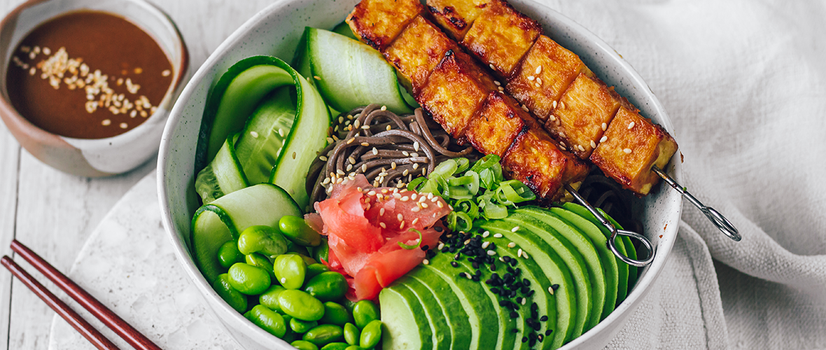
What is Umami and What Does It Have to Do with Taste?
Have you got a bit of a sweet tooth? Or do you gravitate towards more savoury foods? Whichever your preference, the reason you like the foods that you do is because of your tastebuds. Your tastebuds help distinguish the four main ‘tastes’ when it comes to food – sweet, salty, sour and bitter.
However, you may not know that there’s also a ‘fifth taste’, called ‘umami’, which is an intriguing and distinct flavour that can be a delicious addition to your cooking.
What is Umami?
Umami is derived from the Japanese word meaning "delicious savoury taste," which captures the essence of what umami brings to dishes, elevating them in a unique way thanks to its rich, savoury, broth-like flavour.
Scientifically, umami mostly comes from the amino acid glutamate, which is naturally found in foods like tomatoes and mushrooms. Monosodium glutamate (MSG) is also sometimes added to packaged foods and dishes by chefs to produce umami flavour. Studies suggest that umami can positively influence your eating habits and overall health, affecting how much you consume and how satisfied you feel. Research has also shown that umami taste receptors exist in the gut, suggesting that the taste sensation plays a role in sensing and digesting nutrients, important for maintaining a healthy lifestyle.
Umami is often described as a deep lingering taste that can create a sense of fullness, especially in broths and sauces. This taste plays a crucial role in the culinary world by enriching flavour without the need for excess salt or fat, making it a favoured element in many dishes. And, it’s a great flavour to play with in home-cooked meals too.
How to Create Umami
To incorporate umami into your dishes at home, start by using naturally umami-rich ingredients like beans, vegetables, and soy-based products. Foods such as tomatoes, mushrooms, peas, corn, tofu, and tempeh naturally enhance the savoury, umami flavour of dishes. Fermented foods also offer a deep umami taste and you can enhance the umami flavour of your meals by incorporating ingredients such as:
Miso paste
Soy sauce
Kimchi
Worcestershire sauce
Tomato paste
Marmite
Raw or dried mushrooms
By combining these ingredients and seasonings, you'll create dishes that are more flavourful, balanced, and satisfying with a rich umami taste, without the need for additional added salt.
Try umami-packed meals tonight like these sesame soba with miso tofu skewers. This dish is packed with Asian flavours and nutritious soy foods, including tofu and edamame which provide fibre, high quality protein and phytoestrogens.
The Basic Tastes and Their Benefits
Now that you know all about umami, here’s what you need to know about the other four tastes: sweet, salty, sour and bitter.
Sweet: Sweetness comes from sugar, simple carbohydrates (or high GI carbs), and a few other substances that activate your tongue's taste receptors. When combined with other tastes, sweetness enhances overall flavour. If you have a bit of a sweet tooth, you may like the classic and ever-popular Weet-Bix slice. Or, you can use that sweet tooth to your advantage to help increase your veggie intake. Try drizzling sweet balsamic glaze over a classic vegetable dish like this Roast kumara and coriander salad.
Salty: The salty taste is a popular one, but should best be enjoyed in moderation, as excessive salt intake can increase our risk of high blood pressure. While sodium is essential for regulating the balance of ions and water in the body, critical for nerve signalling and muscle movement, it's important to limit your salt intake to avoid potential health risks.
For a great combination of sweet, sour and salty flavours try this warm spinach, pear and walnut salad.
Sour: Sour tastes help us identify acids in foods. While a hint of sourness can be enjoyable, an overpowering sour flavour sometimes indicates that the food may be ‘off’, or not ready to eat yet. For instance, unripe fruit tastes sour, signalling that it’s best to wait until it’s fully ripe and easier to digest before eating.
To incorporate some delicious sour tastes into your weekly meals, try these crispy lemon and Parmesan tofu bites with aioli and finish with slightly sour, slightly sweet lemon delicious pudding.
Bitter: Intense bitterness often signals the presence of toxins, prompting us to instinctively reject potentially harmful substances. However, in small amounts, certain bitter compounds - such as those found in vegetables and dark chocolate – can be appreciated for their health benefits.
Bitter foods are also known to stimulate digestion, improve nutrient absorption, and even support liver function. Additionally, these flavours can enhance culinary experiences, creating a balance that makes dishes more intriguing and layered.

The latest nutrition advice, plus health and wellness tips delivered to your inbox monthly

.jpg?width=435&height=290&format=jpg&quality=95)